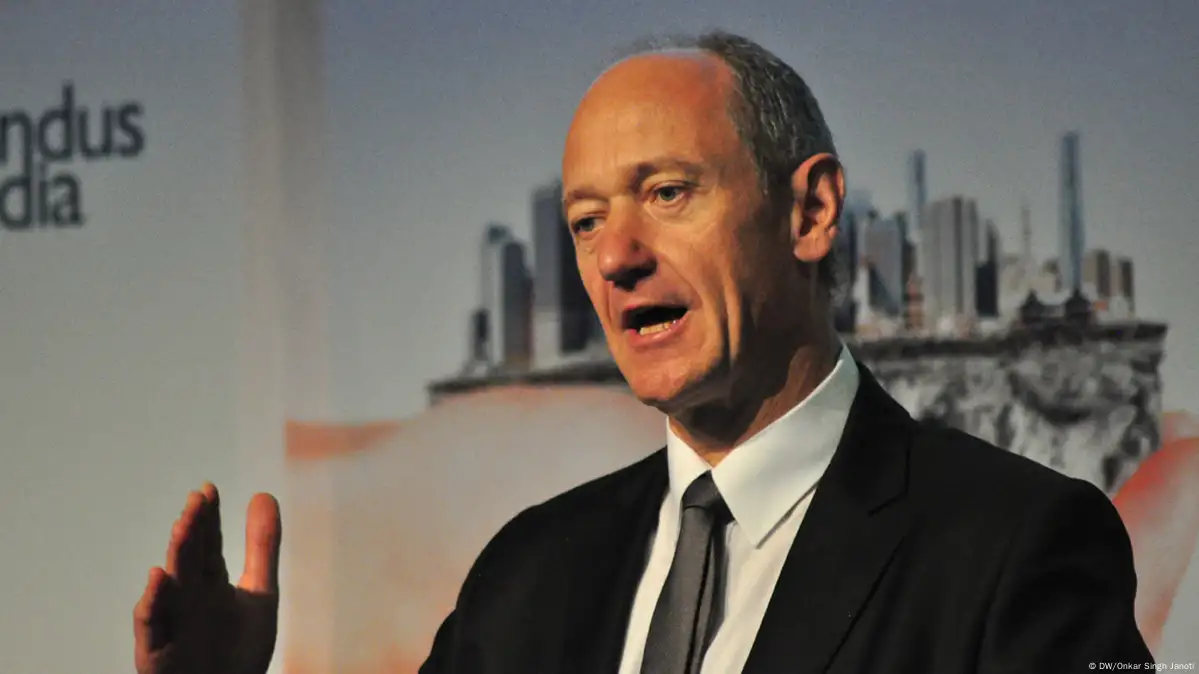Colombo to become a smart city

Sri Lankan capital Colombo has been an important port city along the Indian Ocean for centuries. There is a natural port in the west of the island which was first used by the Portuguese and later on by the British. In the center of Colombo, buildings from the British colonial period can be found. Now the city also has modern offices and apartments as well as a financial complex in its heart.
The modern World Trade Center is only one aspect of the city. With a population of two million people, Colombo is a small city compared to other South Asian capitals. But Colombo's infrastructure has become outdated. Traffic jams and electricity shortages are frequent. Several slums have sprouted in the east of the city, where approximately 70,000 people live.

Urban chaos
Colombo is a typical South Asian city. Urban growth is often as chaotic as it is hidden, according to a recent report published by the World Bank.
Experts point to a lack of planning and hidden urbanization. The municipal administrators have insufficient statistics and knowledge of informal housing areas on the periphery of the city. Nobody knows exactly how many people live in shanty towns or have at least a rough idea about how many people need sanitary facilities, drinking water or electricity. In addition, the tropical climate, frequent typhoons and flooding are make the lives of the inhabitants quite difficult.
Colombo is one of the 30 least livable cities in the world, according to the Economist Intelligence Unit's (EIU) Livability Survey, which is released every year. The ranking is based on the level of stability, health, culture, environment, education and infrastructure. Compared to other South Asian cities, only Bangladesh's capital Dhaka is placed lower on the international livability list, placed 139 out of 140.
The mega project
But the World Bank experts believe Colombo has the potential to be a modern city. The port city is located halfway between Europe, Africa and East Asia, so it could become an international business and trade hub. But before this is going to happen, the city will have to modernize, a World Bank spokesman told DW: "Sri Lanka's future success largely depends on how the Colombo Metropolitan Region is managed and positioned, not only within Sri Lanka, but also regionally and globally."

The Sri Lankan government is determined to take up the challenge. In 2015, it initiated the Megapolis project. President Maithripala Sirisena and Prime Minister Ranil Wickremesinghe are planning to invest $40 billion (35.6 billion euro) to modernize the capital and its surrounding districts in the next 15 years.
Colombo is to become greener also. More pedestrian zones and parks have been planned and the city wants to showcase its historic landmarks. Social housing is aimed to improve the lives of people living in slums on the outskirts of the city. Additionally, the government hopes to attract foreign investment.
Forward-looking planning
Among others, German technology giant Siemens is involved in the planning of the mega project. In 2012, the company started its "Global Center for Sustainable Urban Development." In India, Siemens has been advising decision makers on a project launched by Prime Minister Narendra Modi which aims to modernize 100 Indian cities, making them more attractive for their population. This project could be replicated in Sri Lanka, Martin Powell, director of the London-based Siemens urbanization center, told DW.

"Developers of projects like the Megapolis need to understand that the decisions they are making around infrastructure investment have major consequences and that they need to come to a decision as early as possible," Powell asserted.
Siemens has come up with a special software, which allows developers to simulate different options and its ramifications.
"So, for example, if you put in a low emission zone, we can model what impact that would have on air quality and how much additional jobs this technology would create," he added.
At the same time, the software helps calculate costs and the amount of work involved, or if unpopular political decisions have to be made. Siemens' consultants also offer alternatives, but in the end the urban planners in charge have to decide what they want and what they can afford.
Sustainability and resilience
"Basically, any development project where you have more than 4000 or 5000 houses with businesses, industry and anything else associated with it, you can begin to get the 'economies of scale.' You can then really start thinking of energy and mobility solutions in a way that add value to these projects," Powell explained.
The 'economies of scale' is the cost advantage that comes with increased output or a larger scale of an urban solution. If you plan a decentralized power supply system for only four buildings, you have to invest a lot of money. But if you establish the same decentralized power grid for 4000 houses, you have to invest only slightly more, while getting the same service a thousand times over.
"Then planning really pays off," Powell emphasized. According to the Siemens expert, the biggest challenge for Sri Lanka will be building "a really resilient and capable infrastructure."
Resilience in this context means that the power supply has to withstand even extreme weather conditions like typhoons and floods. Businesses and enterprises will only come to Colombo if the city is able to guarantee that they can work and produce without any interruptions. And in order to take the traffic load off the city's streets, there will be the need to build a railway connecting the north and the south of Sri Lanka's capital, Powell underlines.
Planning ahead will definitely save money and prevent costly improvements afterwards, so the 'economies of scale' can be maximized.
However, Siemens is already looking ahead and is getting ready for the similar tasks. "As soon as the tenders are made public for different projects, we will bid for the ones we feel we can successfully win."
